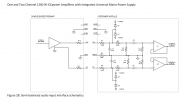I didn't say it was designed to connect anything. What I'm saying is that it's a device that would be useful for testing different signal sources to figure out which ones are possibly involved in a ground loop. The weird homemade computer thingy some performer asked you to connect (and turn up when they start their 3rd song) is as likely to be the source of a ground problem as any other device.I had said on my post that RCA connector is used on aux inputs.
You are now telling me that this device is designed to connect a balanced feed to the mixer aux inputs, which are designed to connect local equipment, and as expected, it hums. Irrespective of the fact that, those aux inputs are almost always non-routable and hence useless for feeding the signal to the audience during the live event.
It is indeed a “pretty weird scenario.” I wonder how often that happens?
Live sound situations are chaotic in the extreme, and require immediate problem solving without delay. I don't get why that is such a challenging concept here.

